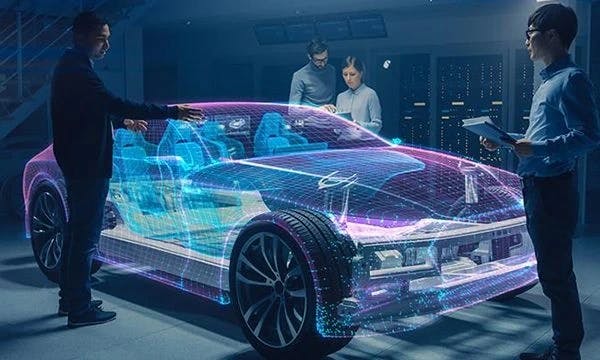In pursuit of achieving sustainability goals, organizations are increasingly adopting three main strategies: sustainable engineering and product design, circular economy (CE) and the adoption of cleantech.
In a recent HCLTech Trends and Insights podcast, Amit L Patkar, Vice President, Manufacturing Business at HCLTech, shared deep insights into this topic.
The discussion included the crucial role of sustainable product engineering in CE, while emphasizing the importance of systems thinking, standardization and collaboration across stakeholders.
What’s cleantech?
Cleantech — according to Patkar — is a broad term that includes a vast range of technologies in an ecosystem that are used in a sustainable way to reduce environmental impact and meet sustainability goals.
For example, manufacturing a product using the right technology, the right raw material, a sustainable mode of supply and production process while considering the impact the product leaves in its lifetime and after retiring.
Sustainable engineering or green methodologies is a differentiated way of creating green solutions for efficient energy and water usage, data storage and factory infrastructure. These new solutions, coupled with CE practices, are redefining new product development, manufacturing, supply chain management and reducing overall emissions.
“There has been a marked shift in recent times toward usage of clean energy and recyclable and locally sourced raw materials. This is reducing the cost of long-distance shipments, logistics and CO2 emissions. The sequential contributions are helping catalyze the step toward more circularized industry, circular manufacturing and circular economics,” says Patkar.
To drive these green moves, it's important to incentivize CE practices. This includes actions like embracing cleantech into manufacturing to track, trace and reduce carbon footprint. These will promote sustainable consumption and design products that are more reliable.
Collaboration — a gamechanger
Simultaneously, collaborating with the right stakeholders has been helping organizations to reduce waste and emissions, offset carbon, invest in planet restoration, lower costs and drive growth.
“Collaboration sits right at the heart of CE and spreads across different parts of an ecosystem. From manufacturers to designers, legislators to policymakers, technology partners to consumers — they must work more cohesively because if one of these spokes of a wheel isn’t rightly oriented then the circularity itself drops significantly,” says Patkar.
Despite prioritizing output maximization, industries are now breaking the linear practices and shifting toward a CE and partnering with experts.
Sustainable product engineering techniques are emphasizing the need of systems thinking and bringing in resource efficiency and extending the lifespan of products, standardizing manufacturing processes, minimizing volume losses and optimizing shipment for transportation.
Systems thinking
Systems thinking is simplifying complexity in traditional processes that affect the planet, by looking at them as wholes and relationships, instead of looking at individual parts.
“Today, a lot of sub-assemblies are grouped into a single package which in turn is grouped into a single pallet or a single large container. We also need to look at ways to minimize the event of volume losses or minimize the event of losses which occur in terms of shipment because they are not packaged or oriented efficiently,” says Patkar.
“We also need to keep a close watch on the logistics transportation companies — how they’re going to orient the shipment, how they’re going to maximize not just the profitability or the revenue share for them, but also minimize the requirement of fossil fuels. So, systems thinking should be at the core of it,” he says.
For example, companies implementing sustainable product engineering practices, such as using emulsifying agents to reduce carbon content in lubricants, are lowering costs, while driving growth, reducing waste and capturing value through products and services.
Patkar says: “In the European market, a lot of products show up with the energy class. This means the total energy used to create a product and what it will consume while being used. This will not just impact the energy bills of the consumers but also impact the way a product is being consumed and the kind of throughput.”
Conscious customers
Even though businesses are facing challenges today while transitioning to CE models, rising awareness and demand in the global customer base is driving the need for more sustainable products. This is encouraging the adoption of green products and sustainable ways to create them.
“If consumers don’t opt for sustainable products, the market won’t exist. In the last 10-15 years, a lot in terms of transformation happened in the European market and there is a conscious effort to adopt sustainable productions. This will spread further,” says Patkar.
Not just the European market, but also in the US. People have been valuing these processes and actively choosing sustainable products, according to a 2019 NYU Stern School of Business research. It stated 50% growth took place in consumer-packaged goods and products marked as “sustainable” from 2013 to 2018.
“Today consumers are interested in buying products that will have a better energy rating or energy class. People are consciously opting for the ones which are more sustainable and cleaner in nature. And that’s where the roles of policymakers come in. This introduces systems thinking in which all stakeholders play their parts in tandem,” he adds.
The right partners
The right stakeholders and partners are highlighting the need for a holistic approach that considers environmental impact, governance and social responsibility, while spotting the difference between functional necessity and standard practices in CE.
In the next step, a technology and engineering partner presents sustainable product engineering concepts and how these can be applied to facilitate the transition to CE. This ensures products are designed not only with longevity and recyclability, but also with resource efficiency.
“Product engineering or designing is crucial for sustainable product development. Now, there’s a significant shift from the traditional ‘cradle-to-grave’ model to a new ‘cradle-to-cradle’ design. This means introduction of CE practice where a product gets a second life after it retires,” says Patkar.
“Closely linked to CE is packaging. The material used is often discarded by customers. So, if you can create a system to ensure that the packaging is made from more sustainable materials, or you can create a system where you can enable collection of the packaging so that it can be reused in its current form with very minor modifications, this will have significant impact,” he adds.
Interestingly, more than half of conscious customers in the US and the UK want ecommerce retailers to use less packaging, reported Statista.
While nine cubic yards of landfill space is saved with a ton of recycled cardboards, it takes only 75% energy to create new ones from the returned boxes. Milk & More does the same with its bottles in the UK.
“Incentivizing has always triggered circularity. This is creating an aftermarket that’s gaining momentum as products with a second life are being introduced here more often than before. Additionally, reverse logistics firms are also supporting the cause. This is further encouraging design and manufacturing of such products,” says Patkar.
“Adding the supply of localized products and raw material to it is cutting down shipment in large volume. This is reducing carbon footprint by a big margin. Many manufacturers are using renewable energy in this entire process as well. Therefore, a product that is ultimately being introduced to the market can be termed as a ‘green product’.”
Practices such as using biodegradable materials in the manufacturing processes and packaging, green transportation and delivery, transparent reporting of emissions, embracing right technologies, tracking and tracing, switching to green energy in factories, empowering customers and removing recycling barriers are creating a sustainable supply chain.
The role of a tech partner
When it comes to the roles of a technology partner, transitioning an organization from its linear processes to CE — encompassing facilities and supply chains that lead to improvement — has been challenging, but achievable.
Patkar believes this improvement has been happening in the hands of HCLTech with limited or no capital investment:
“We are doing this not for a particular industry or product, we are empowering our customers with the ‘enterprise sustainability’ tag. Technology is working from shop floor to top floor and in tandem with all stakeholders. Sustainable product engineering isn’t just creating a green product but also looking at the environmental side of its impact.
“HCLTech has an industry-tested framework that plays a crucial role in making products greener from inception. Our sustainable engineering practices cater across the various phases of the product lifecycle based on the tenets of Design for Excellence. These can be customized for a variety of scenarios and design rules, such as Design for Manufacturing, Design for Sustainability, Design for Serviceability, sustainable manufacturing and operations, supply chain, packaging, digital platforms and connected factory.
“The solution captures the expected ‘greenness’ of the product right at the design stage and guides the R&D and design teams to incorporate this into the early stages right from concept to commercialization. There are several design rules based on the 6R principles that have been implemented to ensure the product complies with the environmental expectations and stands the test of time throughout its lifecycle. This is redefining cleantech with its systems thinking from the word go,” concludes Patkar.
With the rising awareness for environmental impact among consumers and an increase in demand for green products, adoption of cleantech has become imperative to businesses. HCLTech — having created cleantech frameworks, services and solutions — is witnessing the transition from traditional linear processes to CE among its customers and looking forward to empowering more enterprises in their sustainability journey.





